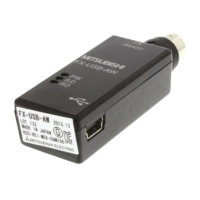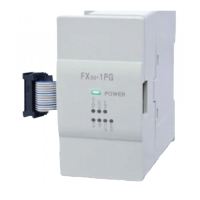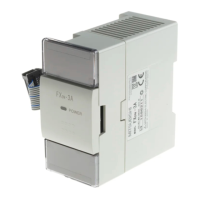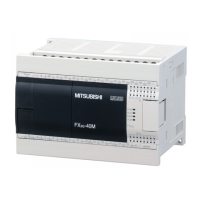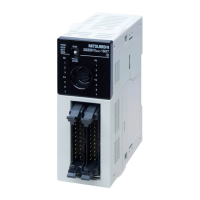Components of Positioning Control and their Roles Positioning controller
3 - 4
MITSUBISHI ELECTRIC
3.1 Positioning controller
Positioning controllers use programs and parameters to send positioning commands to the servo
amplifier. Contents related to programs and parameters are described below.
3.1.1 Command pulse control method
There are two types of control formats used for outputting command pulses from an FX Series
positioning controller:
● PLS/DIR (Pulse/Direction) method
● FP/RP (Forward Pulse/Reverse Pulse) method
Each method requires two outputs from the controller to control specific signals for direction and
pulse control. A third method, known as the A phase/B phase method, uses overlapping pulse signals
to specify direction.
PLS/DIR method
In the PLS/DIR method, one output sends pulses to the drive unit while the other output specifies the
direction of travel.
"ON" and "OFF" represent the status of the controller’s output.
"H" and "L" respectively represent the HIGH status and the LOW status of the waveform. The command
pulse pattern in the figure assumes negative logic.
FP/RP method
In the FP/RP method, each output has a different direction and operates individually to send pulses to
the drive unit.
"ON" and "OFF" represent the status of the controller’s output.
"H" and "L" respectively represent the HIGH status and the LOW status of the waveform. The command
pulse pattern in the figure assumes negative logic.
Fig. 3-2:
Timing diagram
311010da.eps
Fig. 3-3:
Timing diagram
311020da.eps
H
L
H
L
Reverse rotation
Forward rotation
ON
OFF
Output # 1 Pulse train
Output # 2 Direction
H
L
H
L
Reverse rotation
Forward rotation
OFF
OFF
Output # 1
Forward rotation
pulse train (FP)
Output # 2
Reverse rotation
pulse train (RP)
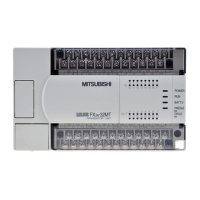
